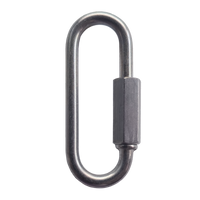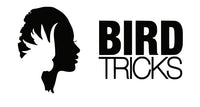
This hasn’t always been the case, but these days you can’t research bird care without the importance of toys in the parrot’s environment being carefully stressed. The educated bird owner understands the multiple purposes bird toys serve:
- they keep the mind active and stimulated
- they keep the body active and fit
- they satisfy the urge to chew and destroy
- they take away the boredom that might result in feather destruction
It is always a joy to watch a parrot at play – it is the sign of a healthy and happy bird – but it is frustrating and confusing for the conscientious parrot owner to have their bird ignore the toys they thoughtfully chose for them.
A FEW REASONS YOUR BIRD MIGHT NOT PLAY WITH TOYS…
Fear or Intimidation:
Prey animals, such as birds, have mechanisms built into their nature to keep them safe. One of these is a wariness of new things. Depending on a bird’s species and its life experiences, it might be overly alarmed by the appearance of something strange in the environment.
These fears would stop a bird from willingly exploring new objects. In fact, they may cause great amounts of distress to the very fearful bird and are probably just one example of many things which send this bird over the edge. Fear is an extreme behavioral response to the surroundings.
When Theo, my Goffins cockatoo, first came to live with me, she was 22 years old and afraid of, well, things. Strangely, she didn’t seem at all afraid of me or other people – only things. There was no rhyme or reason to what she took issue with.
Things that had been in her environment from day one would suddenly have her screaming and pacing in fear. It made no sense. I was mystified as her fears developed and subsided – they were so random and unexpected.
Birds that show excessive fear need to learn that all things in the environment do not represent danger. The only way a bird will learn to trust that its environment is safe is through repeated positive experience. After enough of these good encounters have been logged into memory, a bird will no longer the have the concern that something bad might occur because its experience says otherwise.
A slow and deliberate introduction to new things is necessary if you are to help your bird overcome its fear. Moving too quickly from step to step or being pushy with your expectations will prove counterproductive. This story explains the steps I took to get Theo to accept new toys.

Disinterest:
Because birds are hyper-aware of their environment, they notice all changes to it. A bird that is comfortable in its environment will see new toys as things of interest and go about exploring them. The bird that is completely unimpressed with the world around him leans too far to an extreme in behavior- just in the opposite direction of the fearful bird.
You might have to consider that your bird’s disinterest is a reflection of the toy choices you have made on his/her behalf. Birds have preferences. Some birds like plastic toys with shiny bells, a toy that others might have no use for. Many like destructible toys made from wood and shreddable materials. You should be careful not to make the judgment that your bird is disinterested in toys without first offering all of the options.
Keep in mind that just because YOU think a toy is cute, it doesn’t mean your bird will concur. Birds are tactile and are far more interested in the material that a toy is composed of than the fact that it resembles a frog. A toy should have funtionality – even if its function is that it is fun to destroy.
A good way to determine your bird’s toy preferences without spending a fortune is to put the different materials to the test before you buy. What does your cockatiel do with wadded or shredded paper or index cards? If he is in heaven, chances are that he will love shredder toys made from natural materials like raffia and palm leaves. Give your large bird wooden blocks and a plastic foot toy. Your observation will tell you what you need to know.
Should your bird continue to exhibit a disinterest in toys and other things in the environment, I would consider this to be a sign of illness and would recommend a trip to the vet. Your bird may not be interested in anything because it doesn’t feel well.
NOTE: Neither overly high strung nor passively dull behaviors should be dismissed as personality quirks. As an owner, you should work with your bird to get them past these hurdles which will prevent them from fully enjoying their lives, or seek medical attention for them.

Doesn’t Know How To Play:
Even with just the right blend of curiosity and caution, some birds might simply be at a loss for what to do with a new thing in the cage. I know it sounds strange, but it is much more common than you would think.
In the wild, birds learn everything from what to eat to appropriate social behaviors through observing their parents and other flock members’ actions. Without instruction, it might appear that a new object has nothing of value to offer after first inspection. But we can help to change our bird’s perception of the things around them by teaching them how to play.
HOW TO TEACH YOUR BIRD TO PLAY
Make a fool of yourself!
Sit on the floor in front of the cage (while your bird is inside) and play with a toy your bird disregards (or is suspicious of). Spin it around, bat at it, peer into holes, be vocal – just make sure your bird is watching you have insane amounts of fun with this toy. When done, place it on the floor and walk away. Come back to it again later and repeat.
Remember that birds, like children, are interested in whatever is in your possession, especially if they aren’t allowed to have it. Use that fact to your advantage and “reluctantly” give it up to your bird when the time comes. Hopefully, no one will have been watching you playing with, and not sharing, the bird’s toys.
Make a mess!
Place your bird on a table or at the kitchen counter while you sit or stand at the opposite end with newspaper, paper cups and paper plates. Shred the newspaper into strips. Separate the pieces as much as you can without going to too much trouble (this is supposed to be fun). Pick up some of the newspaper and sprinkle around, you might “accidentally” drop some on the bird.
Grab a handful of shredded newspaper and push it into a paper cup. Turn the cup upside down, punch a hole into the top and pull some of the newspaper through. Let the bird come to investigate YOUR toy.
Place your bird on the floor next to the table and use your paper plate to fan the paper strips over the edge and let them fall on and around the bird. Some birds will respond to this with excitement. Some will act insulted at the indignity of an aerial paper assault. All will have to interact with the paper – that is the point.
Make it a family affair!
Sometimes the very best lessons come from the other birds in the house. Inviting another bird to play with an overlooked toy in the presence of the over-looker might be all that is needed.
My birds use each other as role models. Linus, my umbrella cockatoo, taught Theo the purpose of wooden toys. One day, while I was trying to get her interested in wood blocks, he swooped in and snapped one in half right in front of her. You could practically see the light come on in her head. It was a demonstration I couldn’t have made nearly as effectively.

USE COMMON SENSE AND YOUR IMAGINATION!
Since you are playing the role of “parront” and flock member to your bird, the duty of introducing new things falls to you. If you are clever and thoughtful in the methods you use to do this, you will inspire inquisitiveness and encourage play with all new toys. Your bird will be happier and healthier for it.
Always make safety the main consideration when you choose your parrot’s toys. Click here to learn how to make the best choices for your bird: TOY SAFETY.




3 comments
I have a male and female rescue budgies. Not tamed. They don’t pay with toys and I’m trying to get them to eat healthy. Taking everything very slowly.t hey are about a year old
Hi! I have never owned a bird before, but want to get one very badly!!! I am looking into a rescue budgie and was wondering if you had any suggestions on what toys to start out with because I have no idea what he likes. I have done lots of research but haven’t found much in the way of toys, any suggestions are great!
hi, I have African grey parrot and she is very moody some time she like to play with toys and some time she scared from toys I don’t no why she do this and she hate black colour so much. she like red yellow and blue colour.
Leave a comment